Riddles of Form
An exhibition in the Tower Foyer Gallery, Tower Building, University of Dundee
Friday 20 January - Saturday 11 March 2006
Mon-Fri 9.30am-8.30pm, Sat 9.30am-4.30pm
Admission Free

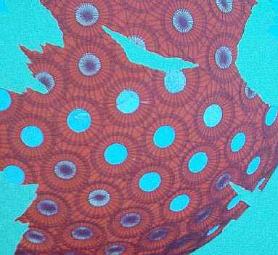
Curated by Museum & Gallery postgraduate students from the University of St Andrews, Riddles of Form (based on the University of Dundee Museum Collections) looks at how both artists and scientists make sense of the world around them through shape and form.
View some of the objects and artworks in the exhibition below.
Objects and Artwork of the Exhibition
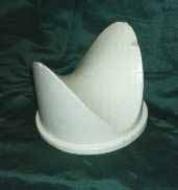


Before computer-generated modelling, three-dimensional models like these stereometric models
(l to r, DUNUC 3089, DUNUC 3100, DUNUC 3831) would have been used to help students visualise the form of various mathematical functions.
They were ordered from a German manufacturer in the early 1900s by Prof J E A Steggall, the University's first Professor of Mathematics. Most of the models in the collection are made from plaster, but some are made from paper or wire.
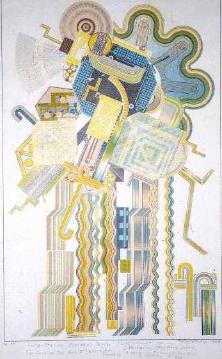
Copyright, Estate of Eduardo Paolozzi, 2006, All Rights Reserved, DACS
This screenprint, Allegro Moderato, Fireman's Parade by Eduardo Paolozzi (DUNUC ARTS:626) comes from a series entitled Calcium Light Night, and was directly inspired by the music of the American avant-garde composer Charles Ives (1874-1954).
The starting point for Paolozzi's screenprints has always been collage. Ives adopted a similar approach to composing - he was known for constructing abstract scores filled with musical quotations from a wide range of sources.
Born in Leith to Italian parents, Paolozzi embraced the spirit of Pop Art in the 1950s, but the muted colours used here suggest a move away from this style. His sculptures and screenprints also reflect an interest in science, technology and machines.
The teaching charts below date from the 1880s-90s. The chart on the left (DUNUC 3839/88) demonstrates three states of the bread mould Rhizopus. The chart on the right (DUNUC 3839/10) depicts seven types of single cell organisms, which we would now class as bacteria and fungi.
These high-quality prints would have been used as a teaching aid in the study of microbiology.

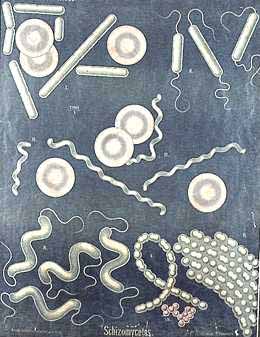
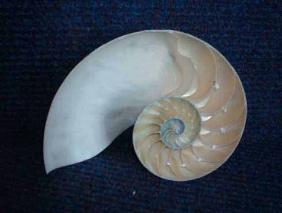

The nautilus shell (DUNUC 714), an example of which is shown on the left, has inspired and puzzled artists and scientists for centuries. A symbol of proportional perfection, the spiral shape is an example of a logarithmic spiral in nature. The nautilus is a type of cephalopod mollusc whose form has remained largely unchanged over the last 500 million years.
It is a swimming animal and the shell provides it with buoyancy.The sealed chambers of the shell contain gas that compensates for the animal's weight.
Commonly known as the Paper Nautilus, the cephalopod mollusc on the right (DUNUC 525) was named Argonauta argo in reference to the Greek myth of Jason and the Argonauts. Its appearance was compared to the sails of their ship, the Argo.
The shell of the argonaut is secreted by the female as a protective case for her eggs. She lives in the shell's entry and guards the eggs until the young hatch.
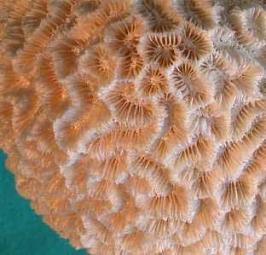

Brain coral (DUNUC 508), left, gets its name for obvious reasons! It is a type of stony coral, so-called because it builds a hard, stony skeleton out of calcium carbonate using minerals absorbed from the ocean water.
The image on the right is a detail from Sunspot by Delia Baillie (DUNUC ARTS:2882). Baillie is inspired by natural science to make art that is concerned with the evolution of form. Her work is informed by the study of natural forms such as the spiral curve of shells and plants, as well as maps of astral and lunar landscapes.

This small ink drawing, Very Small Things by Michael Whittle (DUNUC ARTS:2331) reflects the artists' fascination with scale, as well as his former work as a research scientist in biochemistry. The drawing represents fragments of the various molecular mechanisms found within cells, as well as other particles of matter. Whittle graduated in Fine Art from Duncan of Jordanstone College of Art & Design in 2002.






